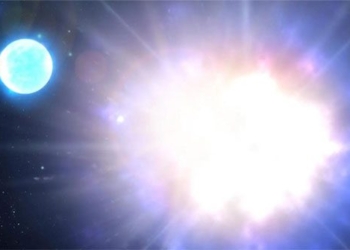Chang’e 4, China’s independently developed lunar probe, has achieved remarkable results in its mission to explore the far side of the Moon.
Recently, it has reported a groundbreaking discovery that has shaken the entire scientific community. According to the latest research results, the far side of the Moon contains up to 2,200 trillion tons of metal! This figure is so vast that it is almost unimaginable, prompting countless speculations and further studies.
What are the types and concentrations of metals on the far side of the Moon?
The types and concentrations of metals on the far side of the Moon are among the unique characteristics of this lunar region. The far side of the Moon refers to the side that is never visible from Earth. Because this surface is never seen from our planet, very little is known about it. However, based on existing observational data and missions to the far side of the Moon, we have a certain understanding of the types and concentrations of metals found there.
On Earth, metals primarily include iron, aluminum, magnesium, sodium, potassium, and more. Upon discovery, researchers found that the main components of metals on the far side of the Moon are iron, titanium, magnesium, and aluminum. Among these, iron is the most significant component, accounting for over 70% of the total amount. Additionally, there are small amounts of metals such as nickel, tungsten, vanadium, and tin.
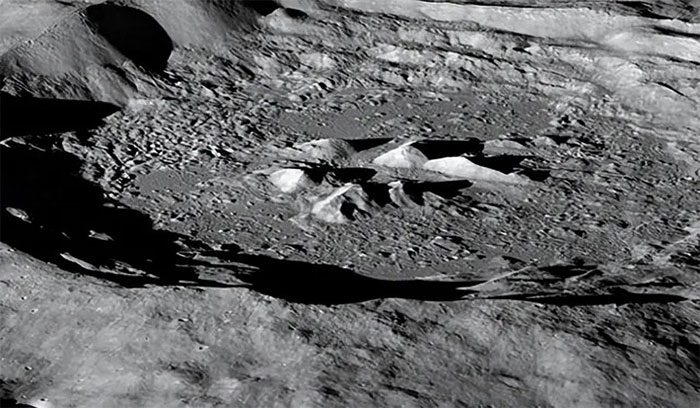
There are certain differences between the types of metals on the far side of the Moon and those on Earth. (Photo: ZME).
According to analyses of rock samples from the far side of the Moon, the average metal content in lunar soil typically ranges from 0.1% to 1%. Metal concentrations vary, being higher in some areas of the far side of the Moon and lower in others. This may relate to the geological structure and rock composition of the far side.
There is currently no clear conclusion regarding the mechanisms behind the formation of metals on the far side of the Moon. Some scholars believe that the metals there may have been produced by a large number of meteoric impacts during the early formation of the Moon. These meteors carried significant amounts of metal material that chemically reacted with the rocks on the Moon’s surface, forming metal compounds. However, this viewpoint requires further research and verification.
How did Chang’e-4 detect metal resources on the far side of the Moon?
Chang’e-4 is China’s first successful mission that landed on the far side of the Moon and carried out exploration work. Its main objectives include studying the geological structure of the far side, the impact of asteroids, crust thickness, and searching for metal resources.
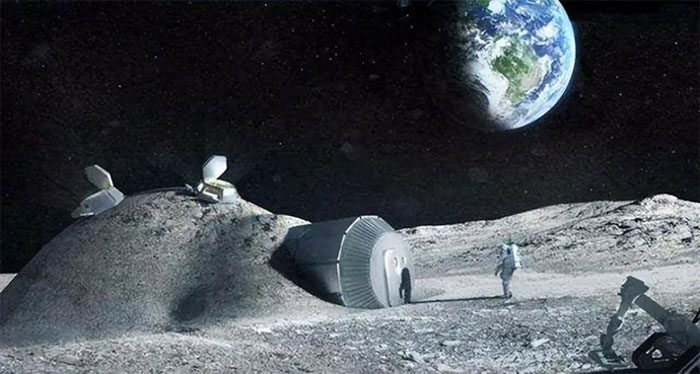
Chang’e-4 successfully soft-landed in the Von Kármán crater on the far side of the Moon on January 3, 2019. (Photo: Zhihu).
Among the equipment it carried is a device known as the Low-Frequency Spectrometer (LFS) on the far side of the Moon, which is specifically designed to detect metal resources.
The LFS device was developed based on low-frequency radio spectrometry technology and operates in the frequency range of 0.1 to 80 MHz. It consists of two main components: an antenna and a signal processor. The antenna receives low-frequency radio signals from Earth and then transmits the signals to the signal processor for analysis.
Regarding the detection of metal resources, the LFS device detects radio signals from the far side of the Moon to determine whether it contains metal minerals. Metal minerals also exhibit good electrical conductivity, and materials with better conductivity emit radio signals. When the LFS device receives these radio signals, it analyzes the frequency and intensity of the signals to determine the distribution of metal minerals on the far side of the Moon.
In addition to the LFS device, Chang’e-4 also carried several surveying instruments such as multispectral cameras and laser altimeters. These instruments can be combined with data from the LFS to provide more comprehensive and accurate results regarding metal resource exploration. For example, the multispectral camera can identify the presence of metal elements by illuminating the lunar surface and recording the reflected spectrum, while the laser altimeter can obtain surface elevation data in areas with metal minerals.
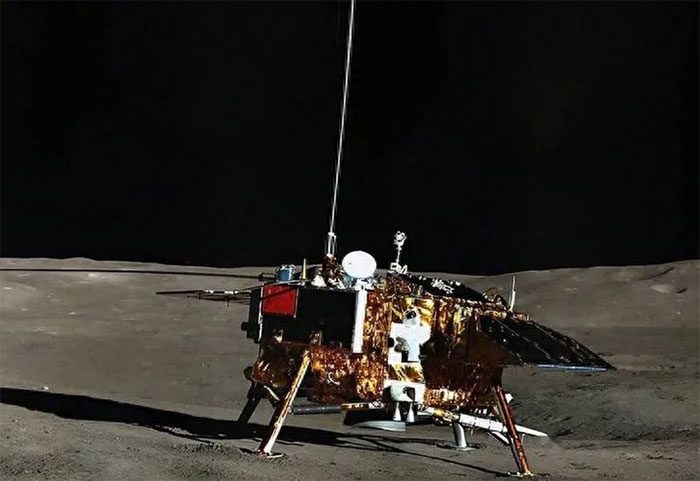
In addition to the LFS device, Chang’e-4 also carried several surveying instruments such as multispectral cameras and laser altimeters. (Photo: Zhihu).
The survey data from Chang’e-4 is transmitted back to Earth for analysis by the Lunar- Earth Communication Control and Measurement Relay Satellite (Chang’e-4 Relay Satellite). Scientists can determine the distribution, type, and abundance of metal resources on the far side of the Moon through the processing and analysis of this data. These insights enhance our understanding of the geological environment on the far side of the Moon and provide important references and foundations for future exploration activities.
Currently, Chang’e-4’s mission is a preliminary survey aimed at detecting metal resources on the far side of the Moon. Due to time and equipment constraints, the results from Chang’e-4 are more geared toward providing references for future missions rather than specific commercial development plans. Future exploration plans will further enhance research into metal resources on the far side of the Moon and provide more detailed data and recommendations for workforce development.
What are the potential impacts and challenges of developing metal resources on the far side of the Moon?
The development of metal resources on the far side of the Moon will deepen our understanding of the geology, origin, and evolution of the Moon. By studying metal minerals on the Moon, we can gain insights into how metals are formed and to what extent in the universe, thereby expanding human understanding of the cosmos.
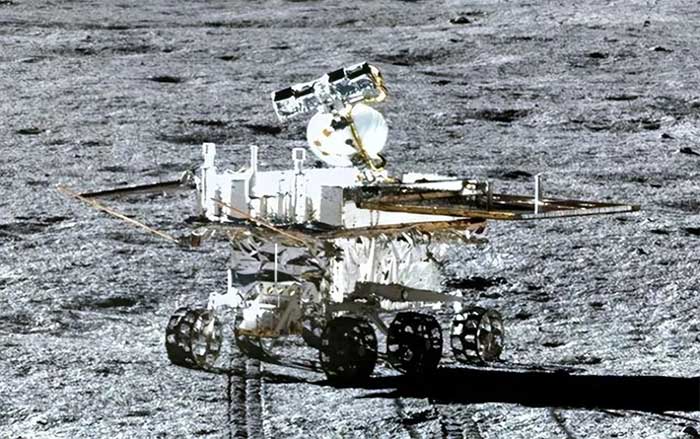
The development of metal resources on the far side of the Moon necessitates international collaboration to address technical challenges and ensure the sustainability of resources. (Photo: Sina).
The rare metals and minerals found in the resources on the far side of the Moon, such as titanium, aluminum, and iron, could be used to manufacture spacecraft, solar panels, and more, providing additional renewable energy. This is significant in addressing future energy demands as Earth’s resources become limited.
Developing metal resources on the far side of the Moon could serve as a backup for life on Earth. With the help of lunar resources, humans could establish bases or colonies to ensure survival and development, especially when Earth faces disasters or resource depletion, making the Moon a viable living environment.
However, developing metal resources on the far side of the Moon requires advanced technical means such as aerospace engineering, robotics, mining technology, and resource processing. Addressing these challenges requires significant investment and research and development, involving cooperation across multiple fields.
The environment on the far side of the Moon is unique and relatively harsh, with extreme temperature variations, low pressure, and more. Humanity needs to find solutions to adapt to these conditions while ensuring the safety and health of workers.
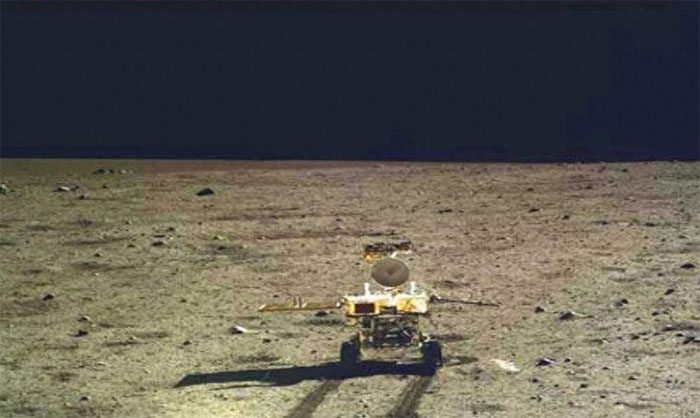
Looking towards countless future explorations, we will reconsider our position in this vast universe and reflect on our relationship with it. (Photo: Sohu).
The development of metal resources on the far side of the Moon also raises ethical and legal issues, such as the legitimacy of resource ownership and the protection of outer space and cultural heritage. It is essential to establish global consensus and develop international standards, laws, and regulations.
This discovery reminds us once again that the wonders and unknowns in the universe far exceed our imagination.








































